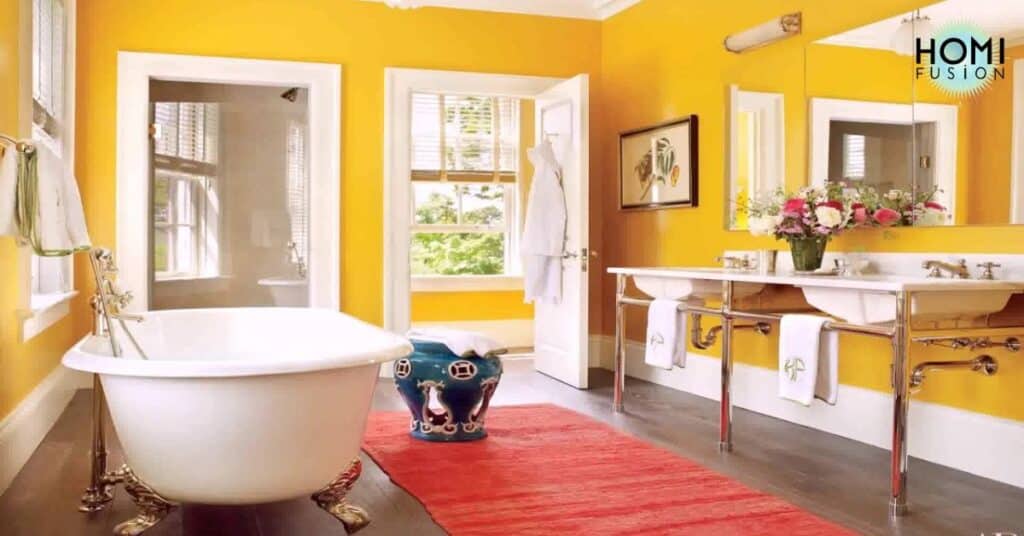A bathroom is a small room in a house designed for personal hygiene activities such as bathing and using the toilet. It typically contains fixtures like a sink toilet shower or bathtub and may also include storage space for toiletries.
Remodeling a bathroom involves transforming the space to enhance its functionality aesthetics and comfort. It is a process of updating and upgrading the fixtures layout and design elements to create a more modern and enjoyable environment for personal hygiene activities. Whether you are looking to replace outdated features improve storage options or simply give your bathroom a fresh new look remodeling offers an opportunity to customize the space to suit your needs and preferences.
This process requires careful planning selection of materials and coordination with contractors. By systematically assessing the existing layout and choosing suitable fixtures and finishes you can transform your bathroom into a stylish and functional retreat within your home.
Put a Plan in Place
Putting a plan in place involves assessing your current bathroom deciding on changes and outlining tasks. It ensures a clear direction for the remodeling project and helps manage time and resources effectively.
Set Your Budget
Setting your budget is crucial before starting any remodeling project including your bathroom. Begin by determining how much you are willing to spend overall. Consider costs for materials labor and unexpected expenses to create a realistic budget. Stick to your budget to avoid overspending and ensure a successful renovation within your financial means.
Also read this: EXPLORING THE INTRICACIES OF THE ARCADE IN OTTONIAN ARCHITECTURE
Decide on Design Features

Deciding on design features is key to creating the bathroom of your dreams. Start by envisioning the overall style you want whether it is modern traditional or something in between. Consider elements like color schemes fixtures and finishes to achieve the desired aesthetic. Incorporate practical considerations like storage options and accessibility features into your design plan for a functional and visually appealing space.
Request a Permit
Requesting a permit is a necessary step before starting your bathroom remodel. Contact your local building department to inquire about the specific permits required for your project. Submit the necessary paperwork and wait for approval before beginning any demolition or construction work to ensure compliance with local regulations.
Gather Your Tools (Or Your Contractor)
Gathering your tools or hiring a contractor is essential for a successful bathroom remodel. If you are tackling the project yourself ensure you have the necessary tools and equipment for demolition installation and finishing work. Alternatively, hiring a contractor with experience in bathroom renovations can save time and ensure professional results.
How to remodel a small bathroom
Remodeling a small bathroom requires careful planning to maximize space and functionality. Start by decluttering and organizing the existing layout to create a sense of openness. Consider replacing bulky fixtures with space-saving alternatives such as a corner sink or a compact vanity. Additionally, opt for light-colored tiles and paint to make the room feel brighter and more spacious.
Incorporate clever storage solutions such as recessed shelves or wall-mounted cabinets to keep essentials within reach without cluttering the space. Utilize vertical space by installing tall cabinets or shelving units to maximize storage capacity. Lastly, choose fixtures and accessories that complement the scale of the room such as a small-scale bathtub or a slim-profile toilet to maintain a balanced and visually appealing design.
Also read this: SHOULD YOU BUY A BOOKSHELF OR DIY YOUR OWN?
8 Inexpensive Bathroom Remodeling Ideas
For an inexpensive bathroom remodel consider repainting walls and cabinets to freshen up the space. Updating fixtures like faucets showerheads and lighting can also make a big impact without breaking the bank.
- Repaint walls and cabinets with a fresh coat of paint to instantly update the look.
- Replace outdated fixtures such as faucets showerheads and towel bars with more modern alternatives.
- Install a new vanity mirror or frame the existing one to add visual interest.
- Update cabinet hardware with stylish knobs or handles for a subtle yet effective change.
- Add a decorative shower curtain or replace an old one to enhance the bathroom’s aesthetic.
- Install new light fixtures or switch to energy-efficient LED bulbs for improved lighting.
- Use peel-and-stick vinyl tiles for a budget-friendly flooring upgrade.
- Incorporate DIY storage solutions like floating shelves or baskets to maximize space and organization.
Start Demolition
Starting demolition marks the exciting beginning of your bathroom remodel. Begin by clearing out the space removing old fixtures and stripping away any outdated materials. Be sure to use proper safety gear such as gloves and goggles to protect you during this process.

Once the area is cleared carefully remove fixtures like sinks toilets and cabinets being mindful of plumbing and electrical connections. Take your time to avoid damaging surrounding surfaces and prepare the space for the next steps in your renovation journey.
Lay Rough Plumbing and Electrical
Laying rough plumbing and electrical is a crucial step in preparing your bathroom for renovation. Start by mapping out the placement of fixtures like sinks toilets and showers to determine the necessary plumbing lines. Then hire a plumber to install the rough plumbing including supply lines and drain pipes according to local building codes.
Simultaneously, coordinate with an electrician to lay out the electrical wiring for lighting outlets and any other fixtures requiring power. Ensure that all electrical work is done safely and up to code to prevent future issues. Once the rough plumbing and electrical are in place, you can proceed with the next stages of your bathroom remodel with confidence.
Hang Your Drywall
Hanging drywall is a significant step in the bathroom remodeling process as it provides a smooth and uniform surface for painting and tiling. Begin by measuring and cutting the drywall sheets to fit the dimensions of your bathroom walls and ceiling. Use screws to secure the drywall panels to the studs, ensuring they are properly aligned and evenly spaced.
Once the drywall is hung apply joint compound to the seams and screw indentations to create a seamless surface. Use drywall tape to reinforce the joints and smooth out any imperfections. Sand the drywall surface once the compound is dry to achieve a smooth and even finish ready for painting or tiling.
Paint and Tile

Painting and tiling are essential steps in transforming your bathroom’s appearance. Choose paint colors and tile designs that complement each other to create a cohesive look and feel.
Painting
Choose the Right Color: Select a paint color that complements the overall aesthetic of your bathroom and enhances its atmosphere.
Prepare the Walls: Ensure a smooth and clean surface by cleaning sanding and applying a primer before painting.
Use Quality Materials: Invest in high-quality paint and tools to achieve a professional finish and long-lasting results.
Apply the Paint: Evenly apply the paint using a roller or brush and consider applying multiple coats for optimal coverage and durability.
Repair Imperfections: Before painting patch any holes or cracks in the walls and sand down rough surfaces to ensure a smooth finish.
Protect Surrounding Areas: Use painter’s tape to protect trim fixtures and surfaces that you do not want to paint ensuring clean lines and minimal mess.
Tiling
Choose Suitable Tiles: Select tiles that are appropriate for bathroom use considering factors like durability and water resistance.
Plan the Layout: Carefully plan the tile layout taking into account fixtures edges and any desired patterns or designs.
Proper Installation: Use tile adhesive and spacers to ensure correct alignment and spacing during the installation process.
Grout and Seal: After installing the tiles apply grout evenly to fill the gaps between them and seal them for added durability and protection.
Regular Cleaning: Establish a routine for cleaning painted walls and tiled surfaces to maintain their appearance and longevity over time.
Touch-Ups: Keep leftover paint and grout on hand for quick touch-ups as needed to address any minor imperfections that may arise.
Install Your Floors
Installing your floors is a key step in completing your bathroom remodel. Begin by selecting a flooring material that is durable water-resistant and suits your design preferences. Popular options include ceramic tile vinyl plank and laminate flooring.
Once you have chosen your flooring prepare the subfloor by ensuring it is clean level and free of any debris. Then lay down the flooring material according to the manufacturer’s instructions taking care to stagger the seams and ensure a tight fit. Finish by adding trim or baseboards around the edges to create a polished look. With your new floors installed your bathroom remodel is one step closer to completion.
Hang Your Shower Door
Hanging your shower door is a crucial step in completing your bathroom renovation. Begin by measuring the opening to ensure the shower door will fit properly. Choose a shower door style that suits your preferences and complements the overall design of your bathroom.

Next carefully install the door according to the manufacturer’s instructions making sure it is level and securely attached. Use a drill and appropriate hardware to mount the door frame to the surrounding walls or shower enclosure. Double-check the alignment and functionality of the door adjusting as needed to ensure a proper fit and smooth operation. Once installed your shower door will not only enhance the appearance of your bathroom but also provide functionality and convenience for years to come.
Install Your Light Fixtures and Exhaust Fan
Installing light fixtures and an exhaust fan is essential for creating a well-lit and ventilated bathroom space. Begin by selecting fixtures that match the overall style of your bathroom and provide adequate illumination. Consider installing a combination of overhead lights, vanity lights, and task lighting to ensure optimal visibility.
Next carefully mount the light fixtures and exhaust fan according to the manufacturer’s instructions. Ensure that electrical wiring is properly connected and secured and that the fixtures are safely anchored to the ceiling or wall. Test the functionality of the fixtures and fan to ensure they are operating correctly before completing the installation process. With properly installed light fixtures and an exhaust fan your bathroom will be both bright and comfortable for everyday use.
How to remodel a bathroom step by step
To remodel a bathroom step by step assess the layout plan changes choose finishes lay tiles paint and accessorize for a personalized space.
- Evaluate the current layout and identify areas for improvement.
- Plan any necessary changes to the layout or fixtures.
- Choose suitable finishes such as tiles flooring and countertops.
- Remove old fixtures and demolish any unwanted structures.
- Install new fixtures including sinks toilets showers and bathtubs.
- Lay tiles carefully ensuring proper alignment and spacing.
- Paint the walls and ceilings with your chosen colors.
- Add accessories and decorative elements to personalize the space such as mirrors lighting and storage solutions.
Bring In Your Bathroom Vanity
It is a significant step towards completing your bathroom remodel. Start by carefully measuring the space to ensure the vanity will fit properly and allow for adequate clearance around it. Choose a vanity style that complements your bathroom’s aesthetic and offers the storage and functionality you need.

Once you have selected the vanity carefully transport it into the bathroom taking care not to damage any walls or flooring. Install the vanity according to the manufacturer’s instructions ensuring it is level and securely anchored to the wall. Finally, connect the plumbing fixtures and install any additional features such as faucets and handles to complete the installation process. With the vanity in place your bathroom will not only look more stylish but also offer enhanced functionality and organization.
Types of Small Bathrooms
Small bathrooms come in various types including half baths three-quarter baths and full baths. Each type differs in the fixtures and amenities it contains and the space available for movement and storage.
Powder Room or Half Bath
A powder room also known as a half bath typically contains a toilet and a sink lacking a shower or bathtub. These compact spaces are often located near the main living areas of a home and are convenient for guests. Despite their small size powder rooms offer functionality and can be designed creatively to make a stylish statement in the home.
Guest Bathroom
A guest bathroom is a designated space for visitors to use when staying in your home. It usually includes essential fixtures like a toilet sink and shower or bathtub. Designing a guest bathroom with comfort and convenience in mind ensures a welcoming environment for your guests.
Full Bathroom
A full bathroom is a comprehensive space that includes all essential fixtures toilet sink bathtub and shower. It provides all the amenities needed for daily personal hygiene routines. With its complete setup, a full bathroom offers both functionality and comfort for everyday use.
Plan an Inexpensive Bathroom Remodel from Start to Finish
Planning an inexpensive bathroom remodel from start to finish requires careful consideration and strategic decision-making. Begin by setting a budget and prioritizing areas of improvement based on your needs and preferences.

Next create a detailed plan outlining the scope of the remodel including tasks such as demolition painting tiling and installation of fixtures. Consider DIY options for tasks that you can confidently tackle yourself and hire professionals for more complex jobs if needed. Throughout the process stay flexible and open to alternative solutions that can help you stay within budget while achieving your desired outcome. With thorough planning and resourcefulness, you can achieve a stylish and functional bathroom remodel without overspending.
Finish Plumbing and Install Your Fixtures
Finishing plumbing and installing fixtures are crucial steps in completing your bathroom remodel. Ensure all plumbing connections are secure and meet building codes to prevent leaks and other issues. Install fixtures such as sink toilets and showers according to manufacturer instructions for proper functionality and aesthetics.
Secure Plumbing Connections: Double-check all plumbing connections to ensure they are tightly secured and leak-free.
Install Sink and Faucets: Mount the sink securely to the vanity or countertop and install faucets according to manufacturer instructions.
Set up Toilet: Install the toilet properly, ensuring it is level and securely anchored to the floor.
Attach Shower or Tub: Connect the shower or tub fixtures including showerhead handles and spout ensuring proper alignment and functionality.
Connect Drainage Systems: Install drainage systems for sinks showers and tubs ensuring proper water flow and drainage.
Test for Leaks: Conduct thorough tests to check for any leaks in the plumbing system before proceeding further.
Apply Sealant: Use sealant around fixtures and connections to prevent water leaks and damage.
Final Adjustments: Make any final adjustments or tweaks to fixtures to ensure they are functioning correctly and aesthetically pleasing.
Remodel Bathroom Yourself or Hire a Contractor?
Deciding whether to remodel your bathroom yourself or hire a contractor depends on various factors. If you have the necessary skills time and resources DIY remodeling can be cost-effective and fulfilling. However, tackling a bathroom remodel yourself requires careful planning research, and proficiency in tasks such as plumbing electrical work, and carpentry.
On the other hand hiring a contractor can save you time and ensure professional-quality results. Contractors have the expertise and experience to handle all aspects of the remodel from design and planning to execution and finishing touches. While hiring a contractor may come at a higher cost it can provide peace of mind knowing that the project is in capable hands and will be completed efficiently and to your satisfaction. The decision to remodel your bathroom yourself or hire a contractor depends on your budget timeline and level of expertise.
Hook Up Your Toilet
It is a critical step in completing your bathroom remodel. Start by positioning the toilet flange over the drain pipe and securing it in place with screws. Next, install a wax ring around the flange to create a watertight seal between the toilet and the drain pipe.

Once the wax ring is in place carefully lower the toilet onto the flange ensuring it is centered and level. Secure the toilet to the floor by tightening the bolts at the base being careful not to over-tighten them. Finally, connect the water supply line to the toilet tank turn on the water, and check for any leaks. Adjust the toilet as needed to ensure a proper fit and functionality. With the toilet hooked up your bathroom remodel is one step closer to completion offering both functionality and comfort for everyday use.
Tie It All Together With Accessories
This is the final step to complete your bathroom remodel. Choose accessories such as towel racks toilet paper holders and shower curtains that complement the style and color scheme of your bathroom. These small details can add personality and functionality to the space.
Additionally, consider adding decorative elements such as wall art plants and decorative baskets to enhance the overall aesthetic and ambiance of the room. Do not forget to incorporate storage solutions like baskets or shelves to keep toiletries and towels organized and easily accessible. By carefully selecting and arranging accessories you can put the finishing touches on your bathroom remodel creating a stylish and functional space that reflects your personal taste and enhances your daily routine.
Tips for Remodeling a Small Bathroom
When remodeling a small bathroom maximize space by opting for compact fixtures and storage solutions. Choose light colors and mirrors to create the illusion of a larger space and prioritize functionality in your design choices.
Create an Illusion of Space
To create an illusion of space in a small bathroom opt for light colors on walls and floors which reflect light and make the room feel larger. Install large mirrors to visually expand the space and enhance brightness. Additionally, choose sleek and minimalist fixtures to minimize visual clutter and maximize the perceived size of the room.
Lighten the Bathroom
Lightening the bathroom involves maximizing natural light by keeping windows unobstructed and using sheer curtains or blinds. Additionally, install bright overhead lighting and task lighting near mirrors to ensure adequate illumination for grooming tasks. Consider adding wall-mounted or recessed lighting fixtures to brighten dark corners and enhance the overall ambiance of the space.
Use Bright Colors

Using bright colors in your bathroom can instantly make the space feel larger and more inviting. Opt for light shades like white soft pastels or pale neutrals on walls floors and fixtures to reflect light and create an airy atmosphere. Introduce pops of color with accessories or accents to add visual interest without overwhelming the space.
Use Large Patterns
Using large patterns in your bathroom can help create the illusion of space and add visual interest. Opt for oversized tiles or wallpaper with bold prints to make a statement and draw the eye upward. Avoid small-scale patterns which can make the room feel cramped and instead embrace larger designs to open up the space.
Sliding Shower Doors save Space
Sliding shower doors are a practical choice for small bathrooms as they do not require extra clearance space to open. They slide smoothly along tracks maximizing floor space and allowing for easy access to the shower. Additionally, their sleek design adds a modern touch to the bathroom while optimizing functionality in tight quarters.
Curved Shower Curtain Rods
They are ideal for small bathrooms as they create the illusion of more space inside the shower. By curving outward, they provide extra elbow room while showering without encroaching on the limited floor space. Additionally, they add a touch of elegance to the bathroom and can accommodate larger shower curtains for added privacy and style.
Use a Pedestal Sink or Small Vanity
Utilizing a pedestal sink or a small vanity is a smart choice for maximizing space in a small bathroom. These compact fixtures take up less floor space than traditional vanities creating a more open and airy feel. Additionally, they offer storage solutions without overwhelming the room making them perfect for tight quarters.
Use Open Shelving
Opting for open shelving in a small bathroom can help maximize storage while maintaining a sense of openness. These shelves provide easy access to essentials and visually expand the space by keeping the walls uncluttered. Additionally, they offer an opportunity to display decorative items or plants, adding personality and charm to the room.
Use Mirrors

Using mirrors in a small bathroom is key to creating the illusion of space and brightness. Large mirrors reflect light and visually expand the room making it feel larger and more open. Consider installing a mirror across from a window to maximize natural light or incorporating mirrored cabinets for added storage and functionality.
Be Creative with Towel Bars
Get creative with towel bars in your small bathroom by utilizing unconventional spaces for hanging towels. Install towel bars on the back of the bathroom door or on the side of cabinets to maximize vertical storage. Consider using hooks or ladder-style racks for a space-saving alternative that adds a decorative touch to the room.
Consider Sink/Faucet Alternatives
Consider sink and faucet alternatives in your small bathroom to optimize space and functionality. Wall-mounted sinks or pedestal sinks take up less floor space creating a more open feel. Opt for sleek single-handle faucets or wall-mounted faucets to minimize clutter and enhance the overall aesthetic of the room.
Professional vs. DIY Small Bathroom Remodeling
Deciding between a professional or DIY approach for a small bathroom remodel depends on factors like budget time and expertise. Hiring a professional can save time and ensure high-quality results, especially for complex tasks like plumbing and electrical work. Professionals have the skills and experience to tackle challenges efficiently minimizing the risk of costly mistakes.
On the other hand, DIY remodeling allows for greater control over the project and can be more budget-friendly, particularly for small-scale updates like painting or installing accessories. With the abundance of online tutorials and resources, DIYers can learn new skills and take pride in completing the project themselves. However, it is essential to assess your abilities realistically and consider hiring professionals for tasks beyond your expertise to avoid potential safety hazards or quality issues.
Frequently asked questions
How do you Modernise a small bathroom?
Modernizing a small bathroom involves using light colors installing a glass shower door opting for sleek fixtures maximizing storage and adding stylish accessories for a contemporary look.
How can I renovate my bathroom cheaply?
Renovate your bathroom inexpensively by upgrading fixtures like the basin and vanity adding storage installing a new mirror refreshing tiles replacing fittings upgrading basin taps and painting a feature wall.
Can I redo my bathroom myself?
Yes, you can redo your bathroom yourself with careful planning research, and assistance. Stick to your budget decide on the color scheme and fixtures early and be flexible throughout the process.
How long does a bathroom remodel typically take?
A bathroom remodel usually takes around 1 to 3 weeks for minor updates and 4 to 6 weeks for more extensive renovations. However, the timeline can vary depending on factors like the scope of work availability of materials, and contractor scheduling.
Conclusion
Remodeling a bathroom is an exciting yet intricate endeavor that requires careful planning budgeting and execution. By following the steps outlined in this guide you can transform your bathroom into a stylish and functional space that suits your needs and preferences. From deciding on the layout and design features to tackling demolition installation and finishing touches each step plays a crucial role in achieving your desired outcome.
Whether you choose to embark on the project yourself or enlist the help of professionals, attention to detail and flexibility are key. By prioritizing your goals staying within budget and maintaining open communication with contractors or collaborators you can navigate the remodeling process smoothly and efficiently. Ultimately, a well-executed bathroom remodel can enhance the overall aesthetic appeal comfort, and value of your home for years to come.







